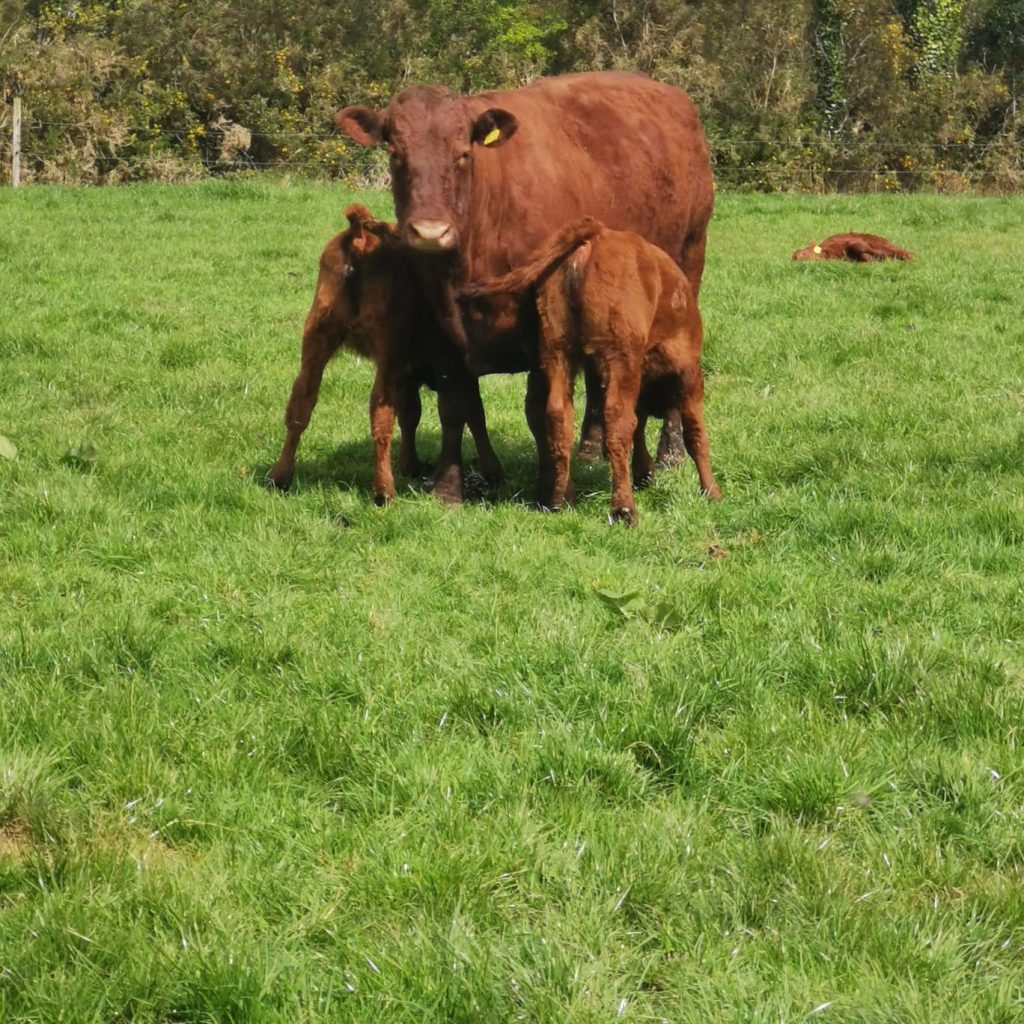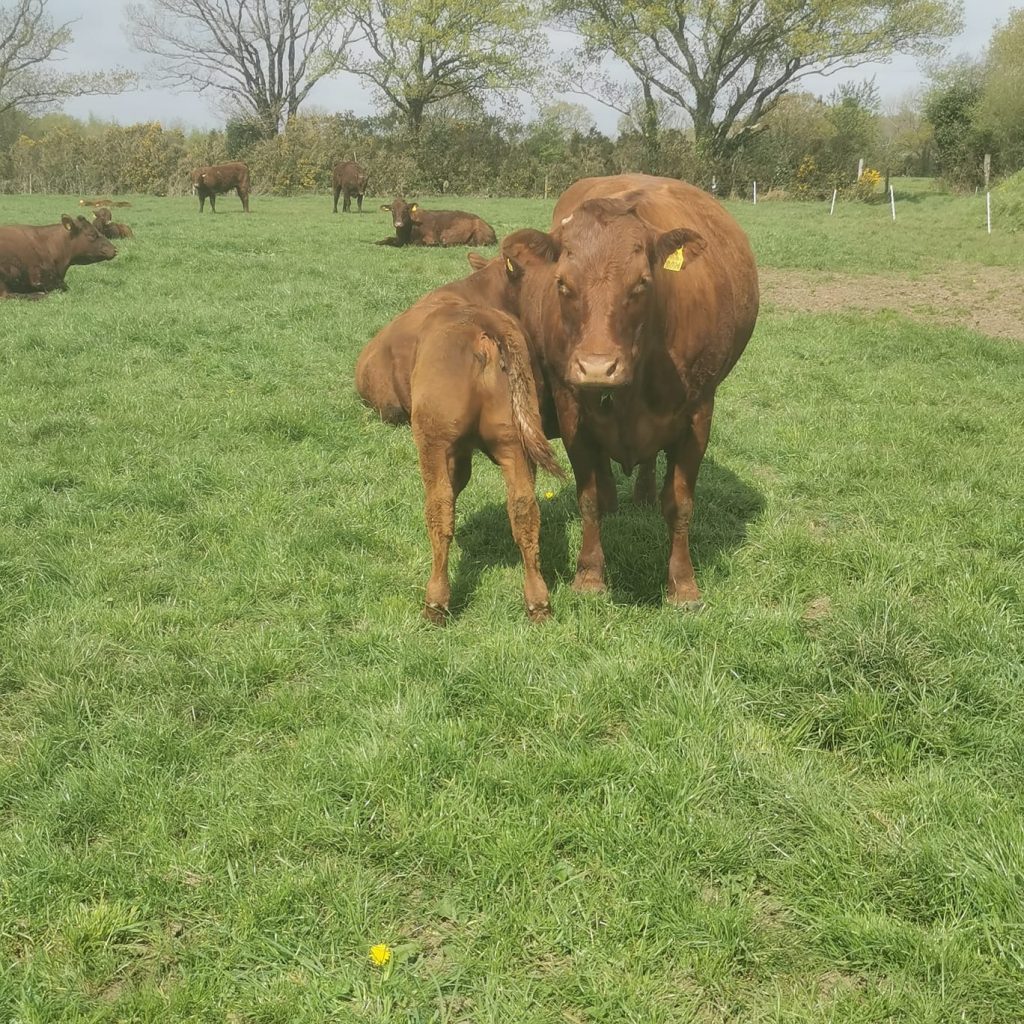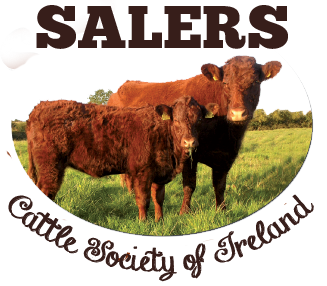Growing up on our small farm near Enniscorthy in Wexford my parents had always carried drystock. Drystock farming was the tradition on our farm for over 40 years before a change in circumstances at home due to illness saw our small farm become devoid of livestock. It remained that way for over a decade. During which time I was away in Dublin in college and employment. I would return home some weekends and I have to say the place was not the same without livestock. Eventually the opportunity arose for me to move home with employment. I was very lucky, my work allowed me the opportunity to farm part time at home. I needed a system that would be manageable with work commitments. I found myself drawn towards suckling, and found the idea of pedigree breeding attractive. I was apprehensive due to my lack of knowledge around breeding cattle, calving cows and animal husbandry pertaining to the suckler cow and her calf. I knew that if I was going breeding cattle I needed a good maternal cow with ease of calving. It was during my search for a breed with the aforementioned traits that the Salers breed became known to me.

In 2012 I bought seven heifers, both pedigree and commercial from Joseph and Richard Fortune of Knottown Salers. Most of those heifers are now ten year old cows still performing in the herd. They came from Buron and Knottown Hermes lines. Initially I used AI, using the Saler bulls Valliant, Boneparte, Whitebog Convenor and Highfield Odran. I retained many heifers over the years and they like their mothers are true to the breed’s maternal characteristics, demonstrating high milk yields, excellent fertility and ease of calving. In general I have no temperament issues within the herd.

I found the work load with heat detection and AI to be too much with my work commitments as numbers grew. During my time using AI, I slipped from January calving to late March, April and May. Even the odd one in June. Since the introduction of the stock bull the breed’s fertility is boldly evident. The bull has brought me back to late December, January and February calving in three calving seasons. I operate a spring calving system. Cows are housed over the winter and receive first cut silage ad lib with Himalayan rock salt lick up to two months pre- calving, then, cows get adlib second cut silage and Himalayan rock salt lick. They maintain good body condition, calf unassisted and are in good condition to promptly return to incalf. Calf weights average 45kg, calves are vigorous with plenty of get up and suck.

I moved to a stock bull in 2018, I purchased a bull from Richard Fortune, Knottown Raj, a son of Knottown Michael in the Gene Ireland programme. He was a dream bull, a docile bull, well balanced with both strong maternal and terminal traits without compromising on calving ease. He produced classy daughters and sons with impressive growth ability and weight for age. The second bull I bought was also a bull bearing the Knottown prefix, Knottown Uri, Incredibly well mannered with impressive presence to match his high index across the maternal and terminal traits. I intend to retain as many of these lads daughters as I can. These bulls also produce quality bulls, both pedigree and commercial. I have found commercial bulls to perform well in terms of growth and weight for age. They have great feed efficiency and from my experience turn out well in the mart and attract similar prices to other Continental breeds. I aim to sell commercial Saler bulls at approximately 500kgs.
I have sold many pedigree bulls over the years, both AI bred and the progeny of my stock bulls. I have received positive feedback about their performance in both the dairy and suckler sectors. I sold a bull to the Salesian Agricultural College in Pallaskenry, which I was delighted with. At that time they were changing their suckler herd to Salers cross females and wanted to run heifers with a Salers bull for ease of calving and to introduce more Salers genetics, consolidating further, the strong maternal genetics of the breed within their herd. Feedback from return customers has been very positive. The dairy farmer loves the ease of calving and reduced labour, they say it’s a huge bonus at a very busy time of year. They say the calves are good quality and attract prices in line with Angus and Hereford dairy calves. This spring April 2022 I received feedback from a buyer from Wicklow. He was incredibly impressed with a Salers bull I sold him, the bull’s size and temperament. His first crop of calves from limosine and blue heifers arrived unassisted and were impressive calves that performed the whole way to weaning. He had decided to leave the very terminal sire behind and purchase another Salers bull. Again it was reduced labour, ease of calving and growth rates that caught this man’s attention.
For me as a part time farmer the Salers cow allows me breed cattle in confidence, without undue concern or worry while I am in work. Before my first calving season I bought a calving camera, linked to my phone so I could keep an eye on things. After a couple of seasons it became clear that it was the checking of the camera was keeping me awake more than the cows calving. It broke and I didn’t bother replacing it. Since 2012 I have assisted two maiden heifers calf and one cow with twins. I tell no fairy tale lads.
From an economic stand point the Salers breed is invaluable to my small enterprise. In October 2021 I attended the annual Salers cattle Society show and sale for pedigree and commercial females in Gort. There was a great turn out of quality stock and plenty of buyers eager to purchase. There was a good atmosphere presale and the auction could only be described as electric with a high demand for in calf lots. Prices achieved on the day were representative of demand. I brought five in calf commercial heifers and enjoyed great success on the day. I received a rosette for one in calf heifer and averaged 2100 euro per head in the sale. I was a very happy and proud man returning to Wexford. Beyond the sale value of the female Salers, reduced veterinary requirements, feed efficiency, excellent feet and general hardiness all contribute to the economic value of the Salers breed.
In Summary then from my own personal experience and feedback from buyers the Salers breed is living up to at least, and, possibly surpassing the mantle of ‘the ultimate suckler breed’.
